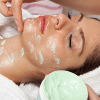
Ever wondered if the sun really causes wrinkles? Well, you’re not alone. Many of us love basking in the sun, but the question remains: at what cost to our skin? Understanding the sun’s effects is crucial for maintaining healthy, youthful skin.
What is Wrinkles?
Wrinkles are those lines and creases that form on your skin as you age. While some are inevitable due to the natural aging process, others are the result of external factors like sun exposure. Essentially, wrinkles occur when the skin’s elasticity and firmness diminish over time.
The Sun’s Impact on Skin
When it comes to the sun’s impact, it’s all about UV radiation. The sun emits ultraviolet (UV) rays, which are divided into two main types: UVA and UVB. Both types can cause significant damage to your skin, but they do so in different ways.
How UV Rays Affect the Skin
UV rays penetrate the skin and cause damage at the cellular level. While you might not notice the damage immediately, over time, it accumulates and leads to visible signs of aging, such as wrinkles. https://barefaceaesthetic.com/suncare-products/
The Role of UVA Rays
UV light is a type of radiation present in sunlight. In small amounts, UV from the sun can be beneficial, as this is how humans get much of their vitamin D.
However, UV light can also cause skin damage that can result in visible changes over time. This occurs due to oxidation, which is the process through which cells repair themselves.
When cells are under too much oxidative stress, their DNA becomes damaged, affecting their ability to reproduce and function as they should. In the skin, oxidative stress may lead to a loss of skin elasticity as UV radiation breaks down elastin fibers, which give skin its structure.
UV damage can also lead to rough skin, uneven skin tone, and redness or visible blood vessels.
Photoaging: What is it?
Photoaging refers to the premature aging of the skin caused by repeated exposure to UV radiation. Unlike natural aging, which is influenced by genetic factors, photoaging is directly related to environmental exposure, particularly to the sun.
Signs of photoaging
Sunlight aging can show up in many ways. A person may develop:
- freckles
- sun spots
- dark or discolored patches
- loose or drooping skin
- fine lines
- deep wrinkling
- broken capillaries
- rough patches
Depending on the person, their skin tone, and the amount of sun exposure they get, these signs may be more or less visible. However, it is important to remember that not all sun damage shows up on the skin’s surface.
Even if a person appears to have no signs of sun aging, excessive UV light exposure with no clothing or sunscreen protection can eventually damage the skin.
Photoaging vs. regular aging
The visible signs of skin aging can be similar no matter what the cause, but there are a few distinctions between photoaging and regular aging.
Intrinsic or chronological aging happens naturally as a person gets older and affects the whole body. On the skin, signs may develop evenly in all locations, causing a general loss of elasticity, lines and wrinkles, or skin that feels thinner or more fragile than before.
In contrast, photoaging is extrinsic, meaning it occurs due to an external factor. It may only affect parts of the body that have had frequent sunlight exposure, such as the face, neck, or hands. Photoaging can also cause some specific symptoms, such as sun spots, that chronological aging may not.
Does the sun cause most aging?
Yes, there is evidence that the sun causes most signs of skin aging in those with lighter skin.
An older study involving 298 white women ages 30–75 years concluded that exposure to the sun may cause around 80% of visible skin aging.
It is unclear how this compares to photoaging in darker skin, as no studies have evaluated this. However, darker skin is generally less vulnerable to photoaging than lighter skin because it contains more melanin. Melanin is the pigment that gives skin its color. It also provides some protection from UV light.
It is important to note that photoaging still affects people with darker skin, but they may be more prone to changes in skin color and sun spots rather than wrinkles, according to a 2021 research review. If wrinkles do develop, they may become apparent later in life.

Does sunscreen really prevent wrinkles?
Absolutely! Sunscreen protects your skin from harmful UV rays, preventing the damage that leads to wrinkles.
Can wrinkles from sun damage be reversed?
While you can’t completely reverse sun damage, treatments like retinoids, laser therapy, and chemical peels can improve the appearance of sun-induced wrinkles.
Is tanning safe if I don’t burn?
No, tanning itself indicates skin damage. Even if you don’t burn, UV exposure can still cause long-term damage and increase your risk of wrinkles and skin cancer.
How can I tell if my wrinkles are from the sun or age?
Wrinkles from sun damage often appear in areas most exposed to the sun, like the face, neck, and hands. They tend to be more pronounced and appear earlier than wrinkles from natural aging.
Are certain skin types more prone to sun-induced wrinkles?
Yes, fair-skinned individuals are more susceptible to sun damage and, consequently, sun-induced wrinkles. However, all skin types can be affected by UV radiation.
Preventing sun aging
While it is possible to reverse some of the signs of photoaging, prevention is usually easier and less expensive. This means protecting the skin from UV damage wherever possible.
Here are some recommendations to consider to help prevent photoaging:
- stop or avoid using tanning beds
- avoid going outside at the brightest times of the day as much as possible
- use sunscreen of SPF 30 or higher before going outside
- cover the skin with clothing while in the sun
- wear a wide-brimmed hat to provide shade to the face
- tint windows in vehicles and buildings
Anyone who receives treatment for photoaging must also continue to protect their skin from the sun going forward. This is especially important for those using treatments, such as retinoids and acids, that increase the skin’s sensitivity to UV.
Even if a person avoids the sun, chronological aging will still occur naturally over time. There are other environmental factors that can cause visible aging, including smoking and air pollution.
When to contact a doctor
In some cases, sun damage to the skin can lead to serious conditions, such as skin cancer. If a person notices any of the following, it is important that they speak with a doctor immediately:
- unusual growths
- rashes that do not get better
- pale, waxy, or scaly patches
- scabs or sores that do not heal
- new red or flesh-colored moles
- changes to existing moles or dark spots, such as an increase in size
Be advised that some of the descriptive skin situations above that can indicate serious skin conditions may look different on darker skin tones.
Conclusion
In conclusion, yes, the sun does cause wrinkles. UV radiation breaks down the essential proteins in your skin and increases oxidative stress, leading to premature aging. However, by taking proactive measures—such as using sunscreen, wearing protective clothing, and adopting a healthy lifestyle—you can protect your skin and maintain its youthful appearance.
 5 6 1 . 8 1 0 . 0 5 5 5
5 6 1 . 8 1 0 . 0 5 5 5 








